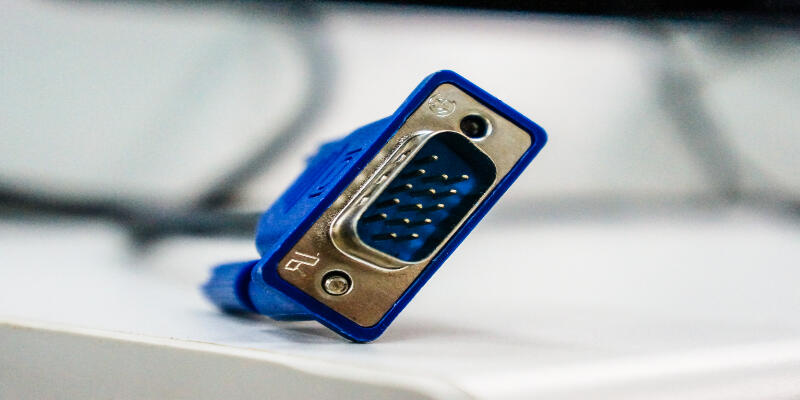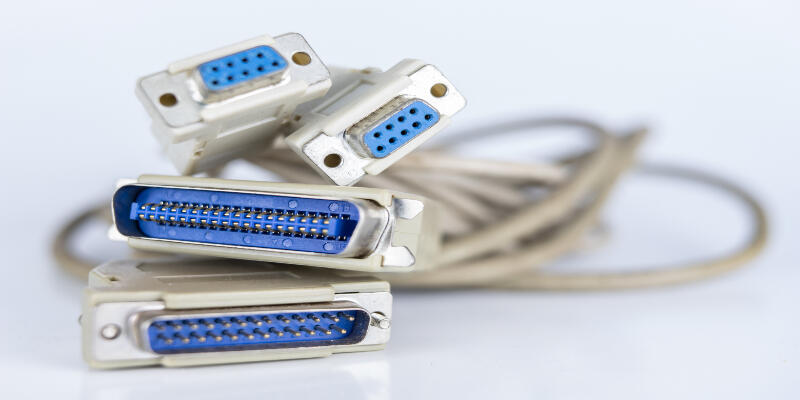Disclaimer: This post may contain affiliate links, meaning we get a small commission if you make a purchase through our links, at no cost to you. For more information, please visit our Disclaimer Page.
Serial and Ethernet both transmit data over a wire, but each has a different purpose. So what’s the difference?
The difference between Serial and Ethernet is that Serial is a physical connection that sends data at a bit-level via a serial communication protocol. However, Ethernet is the most well-known way to connect your devices to a local area network (LAN) and acts as the transmission mechanism.
Table of Contents
What is Serial?
A serial interface is a type of communication that sends data as a single stream of bits over a wire-plus-ground cable, a single wireless channel, or a wire pair. It sends data as a series of voltage pulses over a wire between two digital systems.
The serial interface is present in long-distance communication and most computer networks where the cost of cable and synchronization make parallel communication impractical. Serial buses or channels that transmit data are popular, even over short distances.
It is due to improved signal integrity and transmission speeds in modern serial technology. It outweighs and outstrips the parallel bus’s advantage of simplicity and its disadvantages.
Serial cable transfers information between two devices via a serial communication protocol. Serial ports were common on early computers for connecting a modem, mouse, and other peripherals.
You can find serial ports on the back of your computer as a part of the motherboard.
Before Ethernet, routers usually connected via those ports. The serial port is one of the most basic connections to a computer that has been an integral part of it for 20 years. Although many do not use the serial ports and chose USB connections, most modems and printers still use them.
There are two types of serial interface: asynchronous and synchronous. With an asynchronous interface or SCI, data travels in well-defined frames. A frame is a single, non-divisible packet of bits. The frame includes certain information (for instance, data) and some overhead, such as control bits.
In synchronous serial interface or SPI, the receiver lacks an internal clock, showing that it cannot individually synchronize its data line reading with the transmission rate of the transmitter.
The receiver requires some assistance, and it usually comes as a clock signal shared by the receiver and transmitter. Despite its simplicity, the synchronous interface’s disadvantage is low noise immunity.
What is Ethernet?
Ethernet is the most popular way of connecting computers to a network via a wired connection. It offers a simple interface and serves as a connection for multiple devices, such as computers and routers.
You can create LAN with router and Ethernet cables so your connected devices can communicate with each other.
Ethernet interface serves as a network client and refers to a circuit board or card in your computer. It connects your devices to a local area network (LAN) with Ethernet as the transmission mechanism.
The Ethernet Interface must meet many standards related to the different transmission speeds and error correction types available. Ethernet is a standard that transmits binary data.
Although there are hardware features, Ethernet is hardware-independent. This allows it to use all modes of hardware transmission, from fiber optics to co-axial copper to wireless, depending on the hardware capabilities that the interface sends or receives and the required transfer speeds.
Ethernet completely differs from the Internet as it attaches the computer machines in the pre-defined network and the set location.
The best part about Ethernet is that it does not allow public access and can also transfer highly confidential information with no problems.
Ethernet interface is also a type of hub that allows highly advanced interconnectivity. This type of connectivity is ideal for offices when you must quickly share vital information.
In most cases, the Ethernet interface can connect two or more devices in a local network area. People usually use this interface in their homes or offices, where they have to connect multiple devices most efficiently.
The primary goal of an Ethernet interface is to offer the best possible connectivity of networks of different computer systems.
What is the Difference Between Serial and Ethernet?
When we talk about the difference between Ethernet and Serial interface, we think of Ethernet and a line protocol on top of a serial connection.
The major difference is what you want to connect and with which device. Serial ports like USB connect peripheral devices directly to your computer.
Although you can create a small network with a serial port, it usually can interface with devices that the computer supports.
Ethernet is a network connection that you can use for much larger networks, and it allows other devices to communicate with each other over greater distances.
You can use a USB to connect to a printer or an Ethernet interface adapter and an Ethernet interface adapter to connect to another networked computer or printer. Although Ethernet and Serial seem similar, Serial does not support the same network size as Ethernet.
Another difference is that Serial is a one-layer connection that refers to physical connection. ISP uses it to provide WAN connections as a frame relay. Ethernet is a data link protocol with a protocol data unit known as a “frame.”
Because it is a protocol, it includes a set of protocol control information that encapsulates the data payload. It is in charge of logical link and medium access control. The serial link operates at the bit level.
Although the serial connection is a point-to-point connection, some modern Ethernet is a point-to-point connection on the physical layer.
Compared to a Serial connection that requires addressing, Ethernet frames require it because they carry a source and a destination MAC address for the data-link layer.
Should You Use a Serial or Ethernet Interface?
While many people commonly use Ethernet as a communication protocol across a wide range of devices, from consumer gadgets to industrial devices, Serial or USB is still prominent in industrial devices, despite being older than Ethernet.
Keep reading to find out some reasons you should use the Serial or Ethernet interface.
It is simpler to use a serial cable to connect the computer to devices rather than Ethernet. If you use Serial, there would be no network card to install, no IP address to configure, and no software to install.
Another advantage of the Serial interface is that you can use it to connect to your general Ethernet network. If you want to set up an Ethernet network, you need to install another network card.
However, one drawback of Serial is that it has a limited communication speed, which is 100 Mbaud.
It avoids data packet collisions with its deterministic behavior. However, there are no built-in methods for avoiding data packet collisions in Ethernet.
As said before, you can run many devices from a single network port to your computer with Ethernet. It is more reliable and faster communication technology than Serial. You may experience some issues with the Serial network, and in that case, use an Ethernet network.
It is not fair to compare these two different technologies, and which one you opt for depends on your needs. If you want to avoid all the hassle and connect your computer to devices with no software and network card, go for Serial.
However, I recommend you use the Ethernet interface if you want to connect multiple devices. It will provide you with fast speed and reliability. Also, you can connect your devices over large distances up to 328 feet.
Conclusion
Now you know the important differences between the Serial and Ethernet interface. Although Serial is older than Ethernet and was an integral part of computers, Ethernet took over and became the most popular form of connection between devices and the Internet.
Although each has its advantages and disadvantages, it is necessary to choose carefully between these two technologies, depending on your needs.


